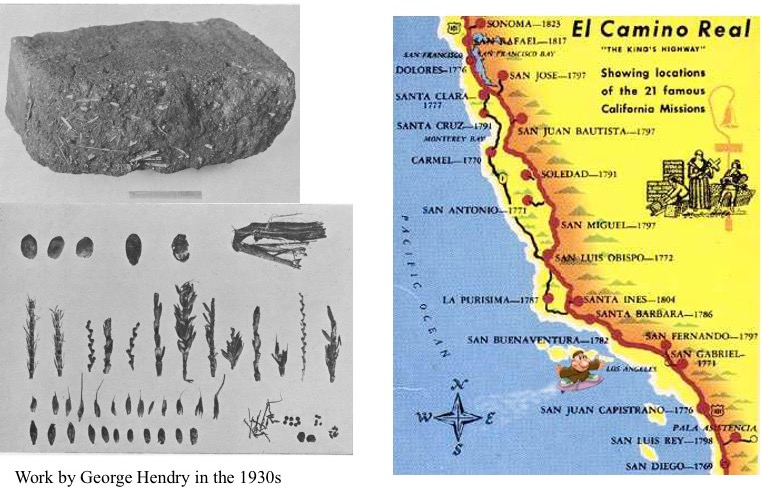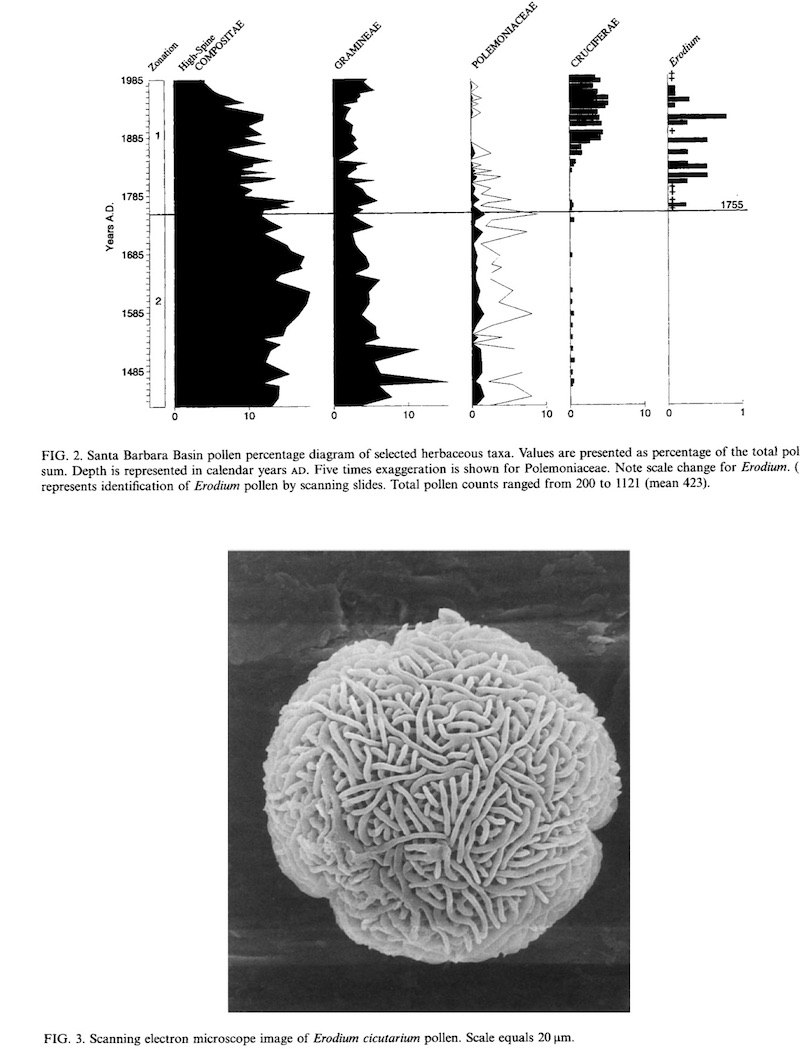Reconstruction of introductions
Historical accounts
Historical accounts of are of limited use in reconstructing the earliest introductions of non-native species in California, because the earliest explorers and European colonists were generally not botanists and non-native plants were introduced and spread before most botanists got to California.
Some historical accounts do refer to vegetation changes. For example, journal writings from the Rancho Period in California (mid-1800s, before the Gold Rush) mention mustard taking over large areas of ranch land.
We can get some hints of when species were introduced by using archaeological methods.
Old adobe bricks
Adobe bricks from Spanish missions that were built between the late 1700s and early 1800s give us some information on changing vegetation.
Adobe bricks, being made of mud, tend to contain fragments of whatever is in the local soil where the brick was made. A series of studies in the 1920s and 1930s found that a few European plant species were present in the oldest mission bricks tested. These species, therefore, presumably entered California prior to the mission-building period. A much larger number of non-native species appear in older bricks of the missions, suggesting that those species entered California during the mission-building perio (probably as contaminent in crop seed).

.
Sediment cores
Pollen in sediment cores give us some information. Such cores are taken from areas (usually lakes or other wetlands) where run-off deposits sediments. In such cores, material in the upper layers is most recently deposited, and deeper layers are older. A variety of methods may be used to determine the dates that different layers were deposited.
Sediment cores sea floor in the Santa Barbara Channel have provided a very high resolution record of a number of things (pollen, charcoal, etc.). The figure below (from Mensing and Byrne, 1998) shows pollen from the sunflower family (the Asteraceae, formerly the Compositae), the grass family (the Poaceae, formerly the Gramineae), the Polemoniaceae, the mustard family (the Brassicaceae, formerly the Cruciferae), and Erodium cicutarium, one of the three species identified by Hendry (above) as appearing to have been in California prior to the mission-building period.
The first mission in California was established in 1769. The pollen record below shows that its pollen first appears in the Santa Barbara region around 1755. (The authors speculate that the species moved north from earlier missions in Baja California ahead of the Europeans.) These data appear to confirm Hendry's conclusion that Erodium cicutarium was in California prior to the building of the first missions there.

Check yourself: do you understand the graph above?